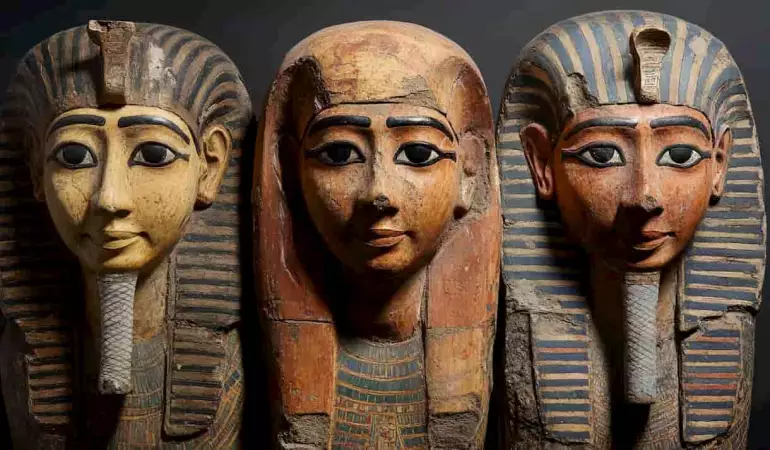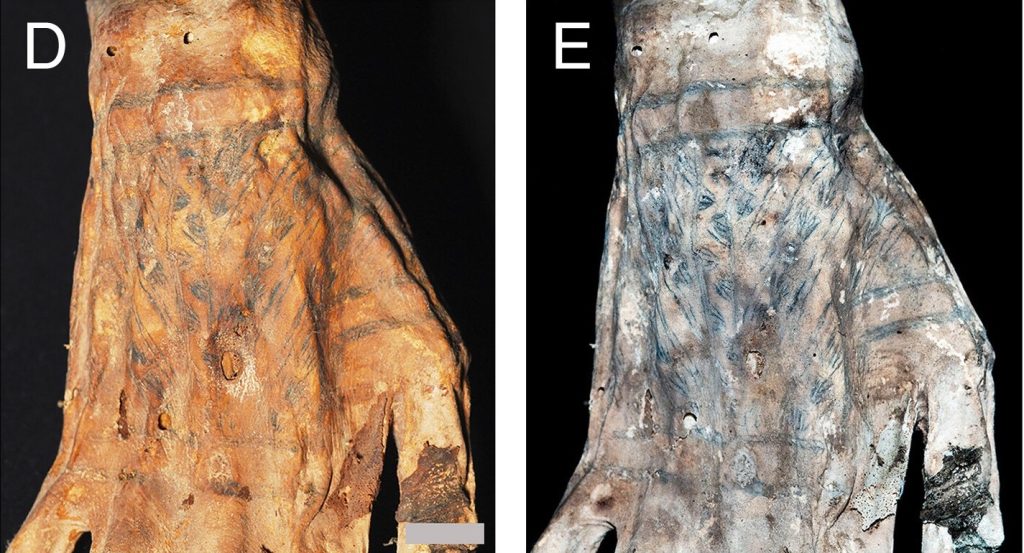Scientists out of their minds: 1200 years of tattoos in mummies - see
Anyone who has had tattoos knows that they can fade over time. But scientists have found that a fluorescent laser can restore tattoos as old as 1200 years. In this case, they carried out a study on carved tattoos in the mummified skin of ancient Peruvians.
January 14, 2025 16:46
Studied the skin of over 100 mummified individuals
The Chancai civilisation, which flourished on the central coast of Peru between 900 and 1533 AD, produced exquisite embroidered and painted textiles in geometric and animal patterns and developed extensive regional trade networks.
They also knew how to make incredible tattoos, which can be seen on the skins of hundreds of mummified individuals.
But over time, the finer details of their craftsmanship have eroded. As a result, what were once bright lines have turned into blurred blotches.
To recreate these works of art, scientists carried out an innovative study. They shone a laser light on the skin of more than 100 mummified Chankai individuals.
Finer than modern tattoo lines
The researchers used a laser to bring out the fluorescence naturally emitted by the skin, while the ink remained black. Thus, ink spillage caused by ageing and mummification was effectively eliminated.

See more photos here.
The resulting contrast revealed even the smallest details. Some lines were just 0.1-0.2 millimetres thick. That is, narrower than most needles used for modern tattooing. How did they manage to do that?
The "needles" used came from nature
It is thought that ancient tattoo artists used thin cactus needles or sharp animal bones to achieve this extraordinary precision. Also ink made from soot, cinnabar and other natural pigments.
The drawings on the mummies have geometric and animal patterns that rival the complexity of Chanchai's pottery, textiles and rock art. This shows that this culture valued body art as much as other forms of artistic expression.
Earlier works show that particularly detailed tattoos were reserved for those who had a certain religious significance in Qanhai society.
Incidentally, the same laser technology used in this study could be applied to other ancient tattooing traditions around the world. This would give a better understanding of the cultural significance of body painting.




